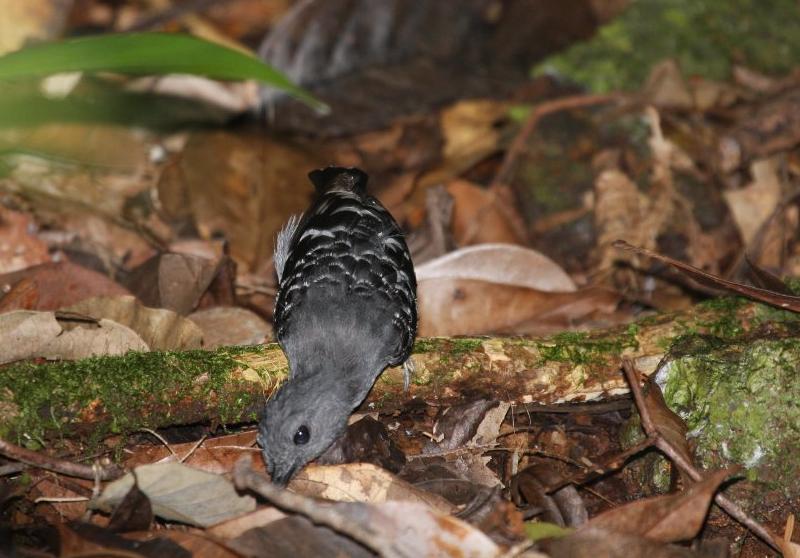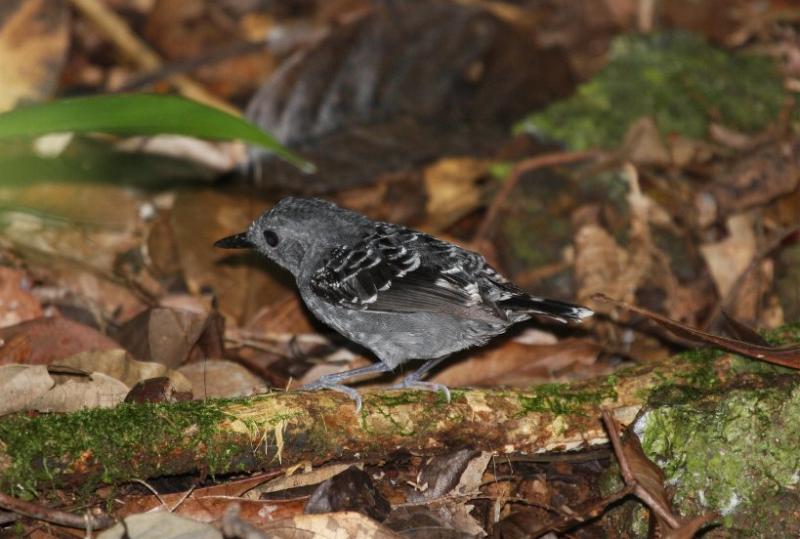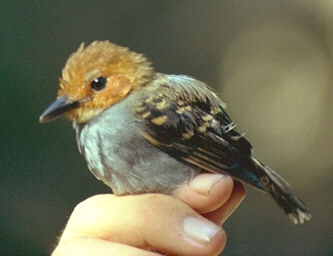 Common Scale-backed Antbird (Willisornis poecilinotus)
Common Scale-backed Antbird (Willisornis poecilinotus)
 Common Scale-backed Antbird (Willisornis poecilinotus)
Common Scale-backed Antbird (Willisornis poecilinotus) |
 |
| Pictures (click on them to enlarge) | ||
|---|---|---|
 © Carl Beel |  © Carl Beel |  © Jan Hein Ribot |
 © Aernout Nieuwkerk |  © Ton Plug |
| The Scale-backed Antbird makes a piping call that resembles the sound of the much larger Blue-throated Piping-guan. The Scale-backed Antbirds often follow the columns of army ants, but are also seen foraging in pairs. They are common at the Brownsberg. Two photos of a male Scale-backed Antbird by Carl Beel, made at the Brownsberg in March 2009 and a female Scale-backed Antbird by Jan Hein Ribot, also at the Brownsberg in Suriname in 1980. |
| Birdsounds (click on them to listen) | ||
|---|---|---|
| Sound recording of a Common Scale-backed Antbird © Steven Wytema |
|
|
||||||||||||||||||||||||||||||||||||||||||||
| Observations through the year | Observations of breeding through the year |
|---|---|
| The 141 reported observations of this bird in Suriname, mainly for the last 50 years up to 2018, have been grouped by month. More birds on one day are counted as one observation. Of course, if the graph should depict the total number of birds seen, the differences between the months could be much more pronounced. | The reported breeding observations of this bird in Suriname. Most observations are about nest with eggs, some about fledglings, or feeding at a nest or the building of a nest. Of the about 5000 nests and eggs found for all species together, about 1/3 comes from the egg collection of Penard between 1896 and 1905. For some reason most collecting then was done in the first half of each year, so the shown distribution does not necessarily reflect the actual breeding preferences. The main dry season in Suriname is reckoned to be from half August to the end of November, the main wet season from half April to half August, but the the timing of begin and end does vary from year to year. Around March a second dry season often occurs. |